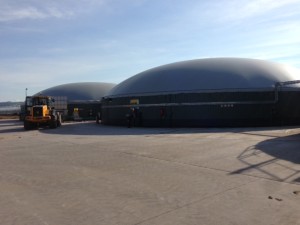 I am always fascinated by business. The way they work, the people who work and run them, the amazing creativity that goes on behind the scenes. So many ways to develop ideas and become innovative to make them work. Also it is really interesting to discover just how different the approach can be to create the product.
I am always fascinated by business. The way they work, the people who work and run them, the amazing creativity that goes on behind the scenes. So many ways to develop ideas and become innovative to make them work. Also it is really interesting to discover just how different the approach can be to create the product.
Recently I was invited to see how tomatoes grow, and whilst at first pass this may not sound that interesting, the visit was fascinating. Like many, I have grown tomatoes at home in the garden and struggled to get them to ripen, so the production of green tomatoes chutney formed one of the ways to deal with the glut, when faced with a large crop and no one left to pass unripe tomatoes on to.
This grower has developed a highly effective, and potentially economic way to heat the green houses so that the tomatoes do ripen, and ripen on time so that the supermarkets can have a plentiful supply should the weather forecast indicate that it will suddenly be a salad weekend and barbeques being lit.
The spaceship like structures in the picture create gas that is then used to create heat for the green houses, any spare gas created or electricity generated is passed back into the ‘grid’ and income earnt too. Clearly there is a large investment in money and in time, to learn enough to develop and run the advanced technology involved, a very different skill set from the knowledge of horticulture needed when growing tomatoes.
It was fascinating seeing this power generating station at the side of the greenhouses where other growers may use coke to fuel a form of central heating to ripen their tomatoes.
In simple terms the consistency of growing tomatoes and ensuring that they are ripe for market is paramount if you are to have a successful business. Unlike my green offerings, this grower knew what he was doing and had the heat to make the difference, where I was at the whim of nature.
Now this got me thinking: the core business here is growing tomatoes, but to do this more effectively, as one of the main costs is the heat to ripen the tomatoes, an additional business of power generation has been developed. I did not ask if the power plant was commercially viable without the tomatoes but one can see how a business can develop and birth a new business.
So:
- What is your real core business?
- Have you got any support activity that has the potential to be a freestanding business?
- At worst are you spending more time on the support activity than on the core business – now this was a killer question as I have seen many businesses sidetracked and weakened by this diversion of energy?
- Has the diversion taken enough of its own energy to be worth continuing with as there is a breakthrough very close?
- And for the last two questions – can you tell when to continue and when to just stop?
Food for thought – and as I scanned the supermarket shelves the red offerings made me realise that more than I thought goes into getting the humble tomato ripe for our basket.
My best wishes,
Peter